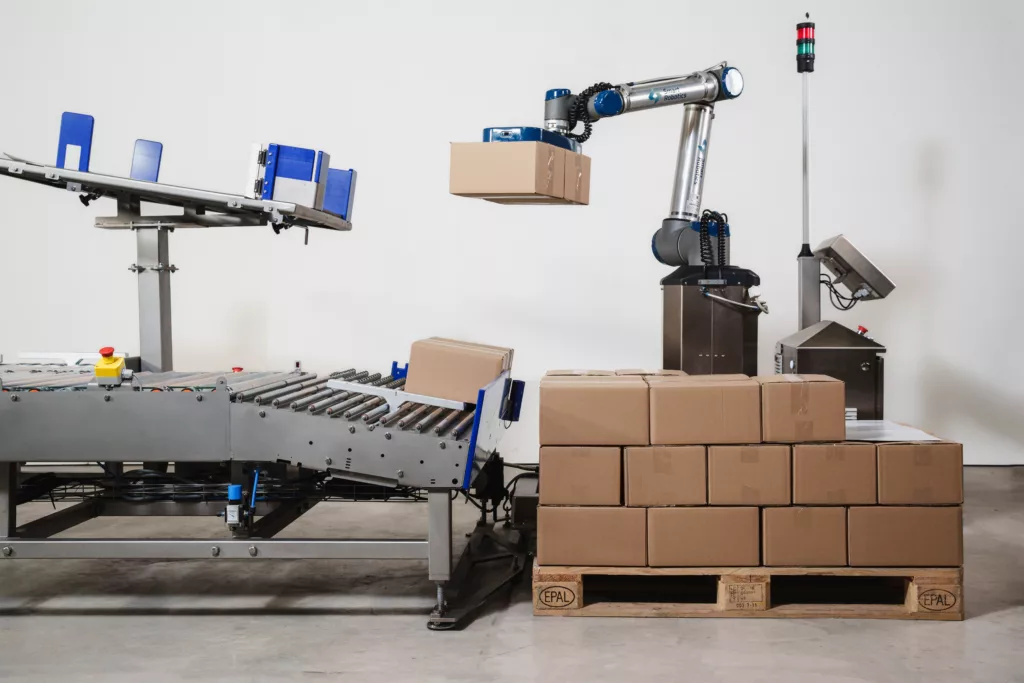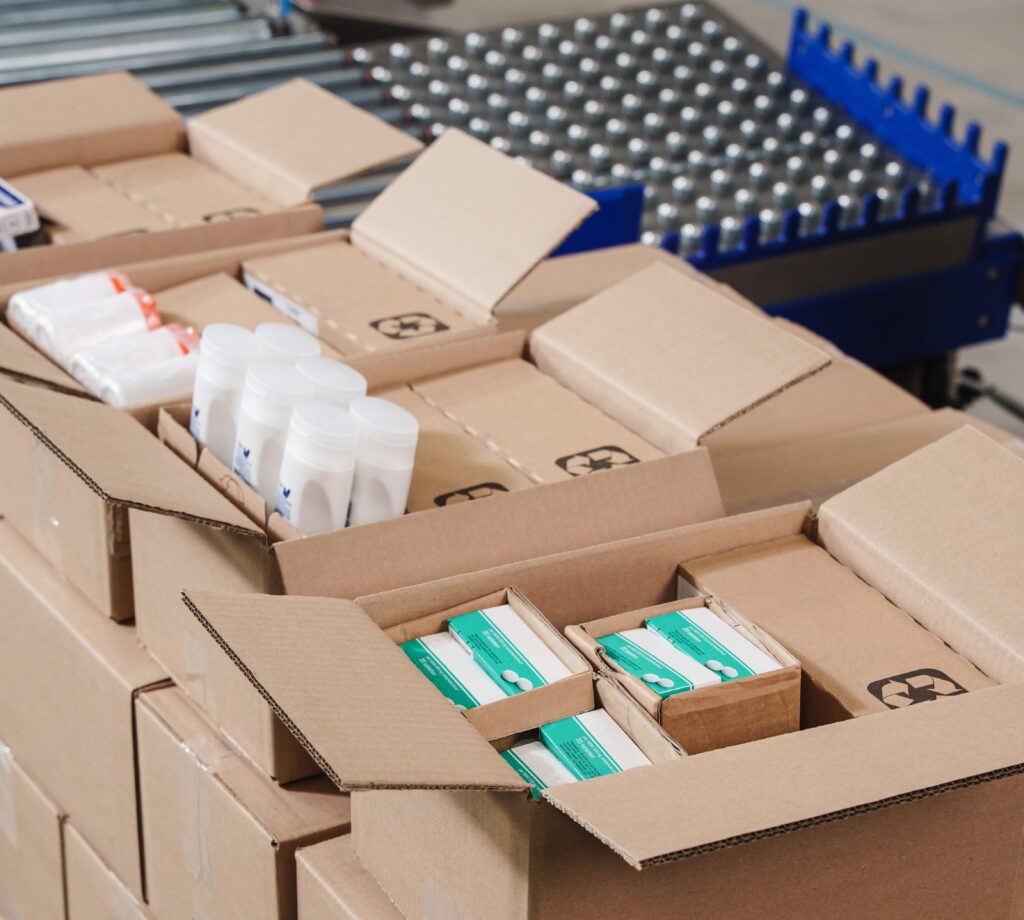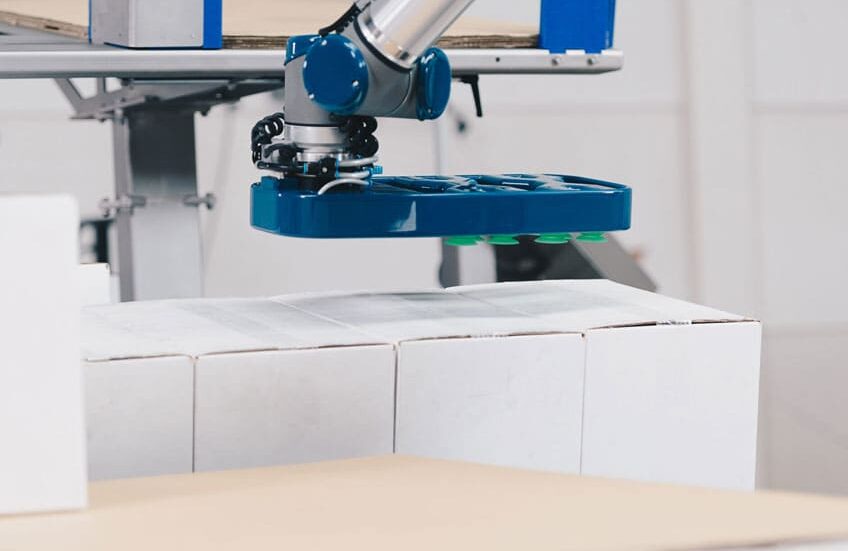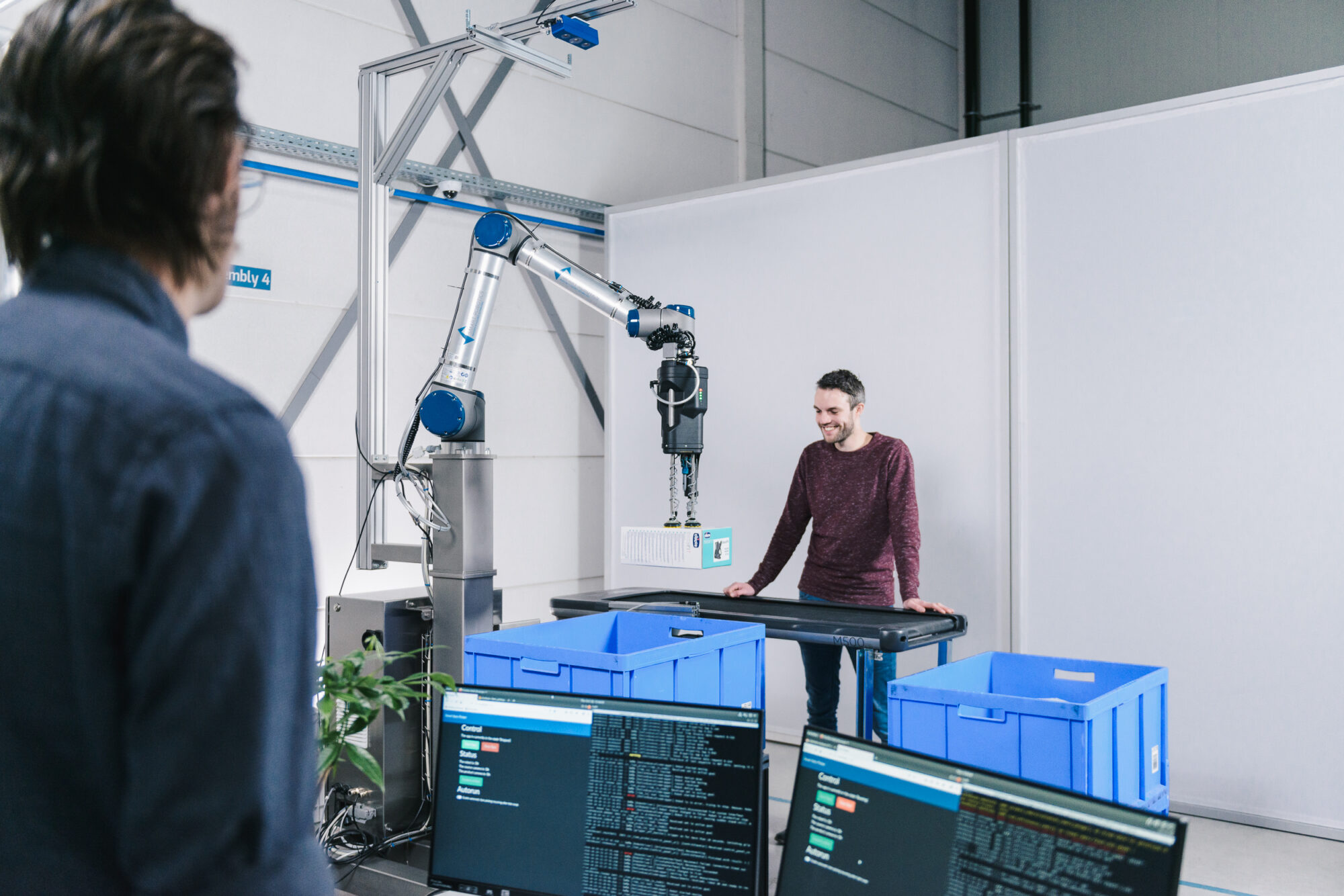Table of contents
Get in touch with our team

This site is protected by reCAPTCHA and the Google Privacy Policy and Terms of Service apply.
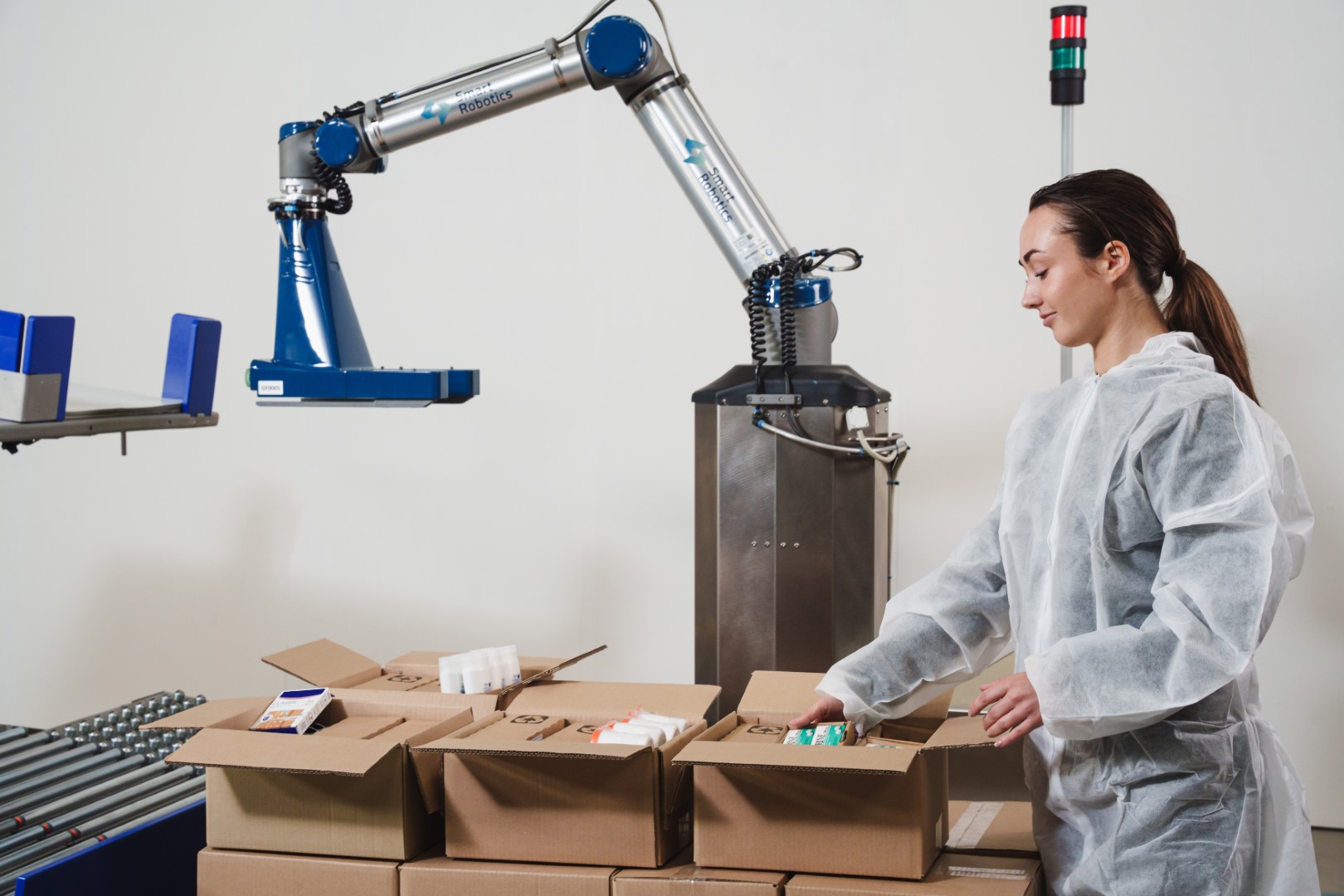
What is a cobot? A guide on collaborative robots
Table of contents
Ah, the most debated question among businesses looking to automate—should I invest in a robot or a cobot? What exactly is a cobot? How much do they cost, and where can they add value?
All these questions and more will be answered here today.
What is a cobot?
A cobot, or collaborative robot, is a type of robot designed to work alongside humans and other cobots. Unlike traditional industrial robots, cobots are compact, flexible, and built with advanced safety features that allow them to operate safely in the vicinity of people.
They are considered more affordable than traditional industrial robots, with a purpose to collaborate with employees rather than replace them. Their ability to assist in various tasks, especially repetitive and monotonous ones, makes them a valuable addition to any modern workspace.
The rise of cobots
The concept of cobots started decades ago, precisely in the 1990s, when the need for robots that could work safely with humans became apparent. Businesses started looking for automation solutions that did not require extensive safety barriers, and so cobots were developed to bridge the gap between traditional robots and human labor.
Since then, cobots have been becoming more sophisticated, user-friendly, and capable of handling complex tasks in various industries that we’ll dive deeper into below.
Key benefits of cobots
Cobots offer numerous advantages, such as their ability to work alongside people, as well as their compact nature and design. But what makes cobots a better choice than a typical industrial robot?
Compact & safe
Cobots’ small footprint allows them to fit right into existing production lines without requiring extensive—or sometimes any—modifications. True to their name as a “collaborative robot,” they’re built to work safely alongside people, so there’s no need for fencing.
Plug & play nature
Easy to set up and program, cobots can be deployed quickly with minimal downtime for businesses. In many cases, they can be up and running within a day, making them a cost-effective choice.
Consistent & precise
Cobots handle tasks with high accuracy, allowing error-free and smooth operations. This not only makes processes more efficient but also reduces costs in both the short and long run.
Positive impact on employees
By handling repetitive and physically demanding tasks, cobots allow employees to focus on higher-value work, increasing job satisfaction and workplace safety.
How much do cobots cost?
The cost of implementing a cobot depends heavily on factors such as the selected model, its intended use, and maintenance requirements. To accurately assess costs, businesses must consider both start-up expenses and ongoing maintenance.
Most companies that offer cobots or cobot solutions also include Service Level Agreements (SLAs) to help manage maintenance costs and keep things running smoothly with minimal downtime. On top of that, internal employee training is often offered to help teams operate the cobot and troubleshoot issues if they ever come up.
Interested in learning about the costs for your business? Get in touch with our warehouse automation experts today.
Different brands of cobots
Several brands manufacture cobots, each offering unique features and capabilities:
Universal Robots (UR)
One of the most recognizable names in collaborative robots, UR cobots are widely used in almost every industry. Their user-friendly interface makes them suitable for businesses new to automation, and their ease of programming and deployment makes them a cost-effective choice for businesses.
FANUC
FANUC cobots offer high-precision automation and are often used in automotive, aerospace, and metalworking industries. They are recognized for their durability and strong industrial capabilities. For industries that require high payload capacity and extreme precision—and don’t mind the extra costs that come with it—FANUC cobots can prove valuable.
Doosan
Known for their high payload capacity, advanced safety features, and easy programming, Doosan’s cobots are designed for industries such as manufacturing, logistics, and automotive.
How cobots are used
Sanding & polishing
Sanding and polishing are primarily used in woodworking, metalworking, and the automotive industry to create smooth, uniform surfaces. Cobots have greatly improved worker health and safety in these tasks, as they help reduce exposure to the serious health risks associated with sanding and polishing.
Picking & placing
Ideal for warehouse automation and the logistics industry, cobots can efficiently pick and place most items found in a traditional logistics facility. Most pick and place cobot solutions are equipped with integrated AI sensors, allowing them to “see” items, select the correct one, and place it with precision.
Palletizing & depalletizing
Commonly used in logistics and warehousing, cobots stack and unload items, automating manual, repetitive tasks that are often dull and monotonous for workers. In many cases, cobots can palletize and depalletize items much faster than humans, making them an invaluable asset for companies. They are also particularly useful as labor shortages remain a common concern in logistics.
Gluing & sealing
A crucial task in the electronics and automotive industries, cobots apply adhesives with unmatched precision—something human workers simply can’t replicate. Since they follow predefined paths and patterns, the process becomes even more efficient and reliable. Plus, cobots help keep workers safe by minimizing exposure to harmful chemicals, protecting their health in the long run.
How different industries use cobots
Cobots can help in many industries, most notably in logistics, automative, food and beverage, and health care.
Food industry
From start to finish, the food industry can greatly benefit from cobots.
Whether it’s packaging, picking, sorting, or even processing food, cobots enhance efficiency at every stage. They maintain high hygiene standards, fill gaps caused by a shrinking labor force, and ensure faster, more accurate operations.
Third-party logistics (3PL)
Cobots can help third-party logistics speed up their operations, including picking and placing for order fulfillment, palletizing and depalletizing for faster shipment handling, and more. They can also be especially useful during peak seasons when order levels spike and extra hands are needed.
Packaging industry
Many cobots can be installed in existing packaging and production lines without requiring any layout adaptation. This means they can integrate effortlessly with conveyor belts and other existing systems to help speed up production. Unlike traditional industrial robots, cobots come equipped with intelligent vision systems and sensors. They can identify issues such as incorrect packing or improper sealing, helping to minimize errors and reduce costs in the industry.
Electronics industry
Because the electronics industry requires extreme precision—like when assembling circuit boards or microchips—cobots help keep everything accurate. They also make it easier to safely move fragile electronic parts between workstations.
Pharmaceutical industry
The pharmaceutical industry requires strict precision and quality control, which makes cobots a valuable tool.
They can assist with tasks like handling hazardous chemicals, sorting, packaging, and labeling—helping pharmaceutical companies speed up their operations.
Automotive & aerospace industry
Cobots are very useful in this industry, taking care of detailed assembly tasks like screwing and welding, all the way up to assembling doors. They work 24/7, helping speed up production while keeping costs low. They’re also great for quality control, spotting defects in components to maintain safety standards.
Conclusion
Cobots represent the next step in workplace automation—not by replacing humans, but by working alongside them. Unlike conventional robots that require large safety zones, cobots can function in shared spaces, helping businesses make the most out of their available space. Their ability to adapt to different tasks and environments makes them an ideal choice for industries looking to automate without major disruptions.
And as of 2025, the adoption of collaborative robots continues to rise, with no indication of it slowing down—solidifying their role as a cornerstone of the future workplace.
Get in touch with our team

This site is protected by reCAPTCHA and the Google Privacy Policy and Terms of Service apply.
